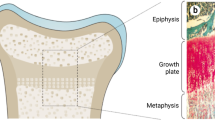Abstract
Multiple hymenoptera stings are a cause of rhabdomyolysis, elevated liver enzymes, clotting abnormalities, kidney injury, and even death. However, the progression of the clinical and laboratory findings has been described mainly in sporadic case reports. We report the clinical and laboratory manifestations of multiple hymenoptera stings in six children who were hospitalized and referred for a nephrology evaluation and follow-up over a 12-year period. One patient succumbed 13 h after the stinging accident. In the five surviving patients, we found somewhat similar pattern of clinical and laboratory course: rhabdomyolysis with elevated liver enzymes are the earliest manifestations, followed by kidney injury and anemia. An asymptomatic phase of several days between the stinging accident and severe kidney injury can occur. There was a strong seasonal association, with all six events occurring in August or September. In children with multiple hymenoptera stings, a somewhat predictable clinical and laboratory course is expected and an initial laboratory evaluation is needed, and even in asymptomatic children, a repeated laboratory evaluation is highly recommended.
Similar content being viewed by others
References
Barnard JH (1973) Studies on 400 hymenoptera sting deaths in the United States. J Allergy Clin Immunol 52:259–264
Betten DP, Richardson WH, Tong TC et al (2006) Massive honey bee envenomation-induced rhabdomyolysis in an adolescent. Pediatrics 117:231–235
Bhatta N, Singh R, Sharma S et al (2005) Acute renal failure following multiple wasp stings. Pediatr Nephrol 20:1809–1810
Bischof RO (1996) Seasonal incidence of insect stings: autumn ‘yellow jacket delirium’. J Fam Pract 43:271–273
Daher EF, da Silva Júnior GB, Bezerra GP et al (2003) Acute renal failure after massive honeybee stings. Rev Inst Med Trop São Paulo 45:45–50
Golden DBK, Kelly D, Hamilton RG et al (2009) Venom immunotherapy reduces large local reactions to insect stings. J Allergy Clin Immunol 123:1371–1375
Grisotto LS, Mendes GE, Castro I et al (2006) Mechanisms of bee venom-induced acute renal failure. Toxicon 48:44–54
Gunal AI, Celiker H, Dogukan A et al (2004) Early and vigorous fluid resuscitation prevents acute renal failure in the crush victims of catastrophic earthquakes. J Am Soc Nephrol 15:1862–1867
Hommel D, Bollandard F, Hulin A (1998) Multiple African honeybee stings and acute renal failure. Nephron 78:235–236
Kim YO, Yoon SA, Kim KJ et al (2003) Severe rhabdomyolysis and acute renal failure due to multiple wasp stings. Nephrol Dial Transplant 18:1235
Korman SH, Jabbour S, Harari MD (1990) Multiple hornet (Vespa orientalis) stings with fatal outcome in a child. J Paediatr Child Health 26:283–285
Koya S, Crenshaw D, Agarwal A (2007) Rhabdomyolysis and acute renal failure after fire ant bites. J Gen Intern Med 22:145–147
Moffitt JE, Golden DBK, Reisman RE et al (2004) Stinging insect hypersensitivity: a practice parameter update. J Allergy Clin Immunol 114:869–886
Pramanik S, Banerjee S (2007) Wasp stings with multisystem dysfunction. Indian Pediatr 44:788–790
Thiruventhiran T, Goh BL, Leong CL et al (1999) Acute renal failure following multiple wasp stings. Nephrol Dial Transplant 14:214–217
Vachvanichsanong P, Dissaneewate P (2009) Acute renal failure following wasp sting in children. Eur J Pediatr 168:991–994
Vikrant S, Pandey D, Machhan P et al (2005) Wasp envenomation-induced acute renal failure: a report of three cases. Nephrology (Carlton) 10:548–552
Watemberg N, Weizman Z, Shahak E et al (1995) Fatal multiple organ failure following massive hornet stings. J Toxicol Clin Toxicol 33:471–474
Yeruham I, Braverman Y, Schwimmer A (1998) Wasps are the cause of an increasing mastitis problem in dairy cattle in Israel. Vet Q 20:111–114
Zhang R, Meleg-Smith S, Batuman V (2001) Acute tubulointerstitial nephritis after wasp stings. Am J Kidney Dis 38:E33
Conflict of interest
The authors do not have any conflict of interest relating to this study.
Author information
Authors and Affiliations
Corresponding author
Rights and permissions
About this article
Cite this article
Broides, A., Maimon, M.S., Landau, D. et al. Multiple hymenoptera stings in children: clinical and laboratory manifestations. Eur J Pediatr 169, 1227–1231 (2010). https://doi.org/10.1007/s00431-010-1209-4
Received:
Accepted:
Published:
Issue Date:
DOI: https://doi.org/10.1007/s00431-010-1209-4




